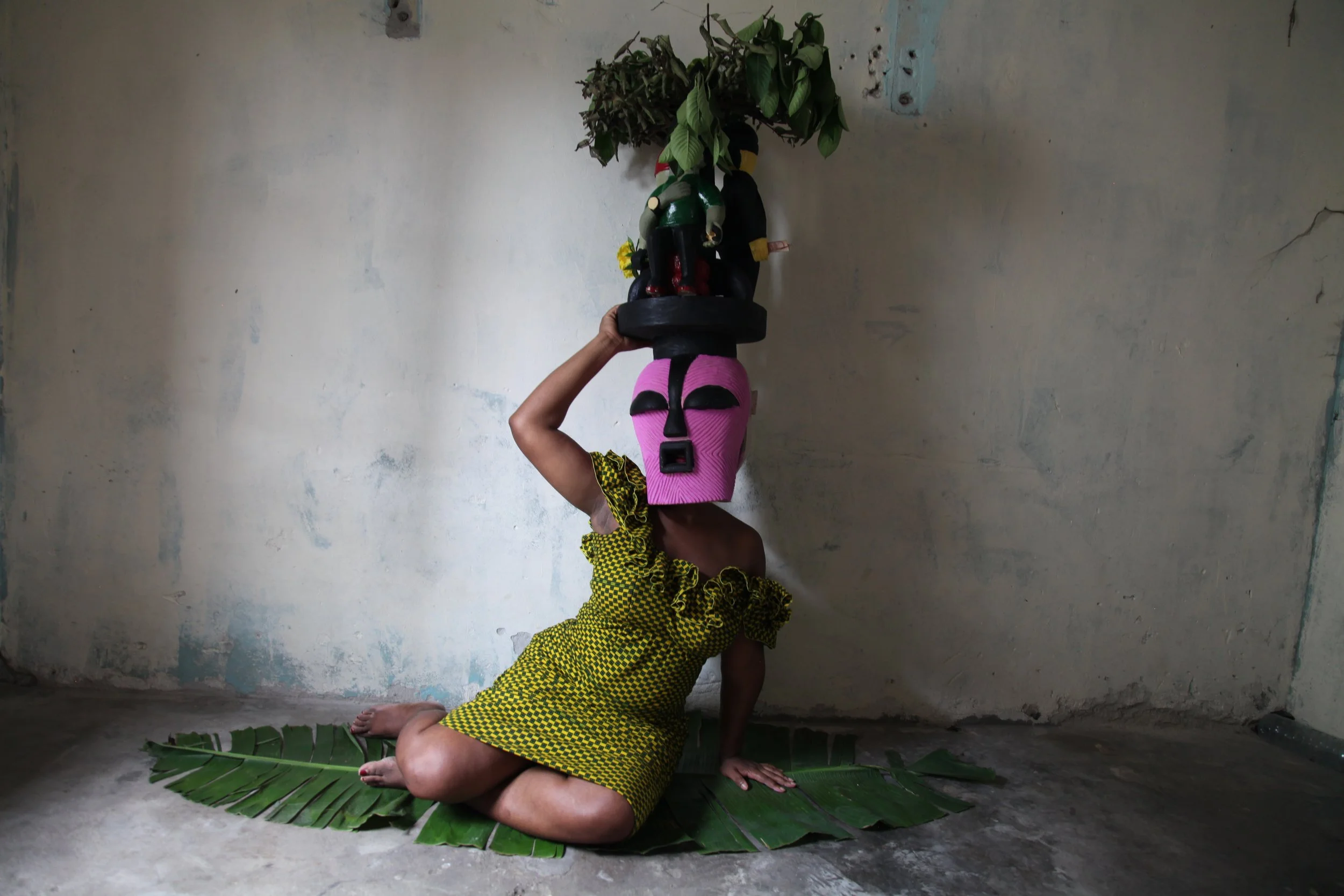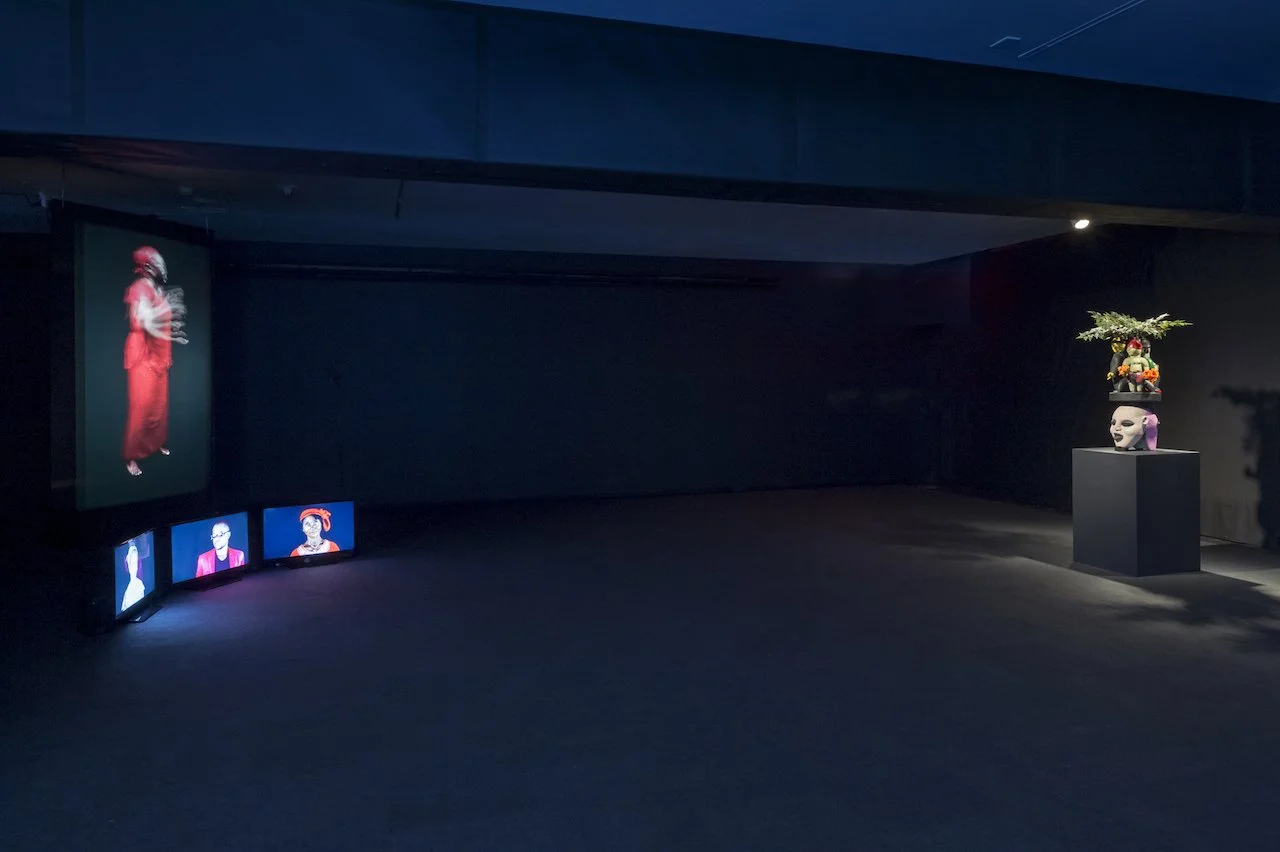THE INVISIBLE MAN
MASK, VIDEO INSTALLATION,
PHOTOGRAPHIC WORKS
The Invisible Man is a series of works made between 2014 and 2016 in Ogoniland, Zina Saro-Wiwa’s ancestral homeland and the site of one of the most catastrophic international clashes between Big Oil and indigenous farmers. Her father, writer and Nobel Nominee Ken Saro-Wiwa, was murdered by the Nigeria government for his peaceful campaigning against Shell Oil’s pollution of the beautiful farming Eden that is Ogoniland. Saro-Wiwa decided in 2013 to return to Ogoniland to make work about the region which she saw being murdered all over again with the storytelling that emerged from the troubled region that focused on and fed the endemic violence that flourished. She knew instinctively that restitution did not lie in simply reporting violent clashes or oil spills, but rather she went to Ogoniland to listen to the land and feed the stories that connected the people to their environment and celebrated their way of life.
The Invisible Man series is a result of Saro-Wiwa’s investigation into masquerade culture and mask-making. After researching and photographing masquerade traditions she decided to insert herself into it. Women traditionally do not get involved with masquerade but Zina decided to challenge the tradition and commission a mask. She says:
“Whenever you ask people why masquerade exists, they say it is about social cohesion, about honoring the land and healing.” I as an Ogoni, albeit one that grew up in the UK and lived in America, wanted to see if this practise could heal me too. At the time I had lost my father and youngest brother in quick succession. Sadly since the creation of this mask I lost two more brothers and a nephew. I am still trying to understand if the mask heals or not but becoming one with a community that I am supposed to have “transcended” and planting myself in its soil has done wonders for my soul. The Invisible Man is not a commemoration. As with all masks it is a living thing. It is activated by dance and in my case by video installation performance. And it is carved from special trees in Ogoniland. I feel that through this mask I have re-inscribed myself into the landscape and asked the invisible to dance for me. Death is not silence and it is not an end. Spirit remains active through living culture.”





